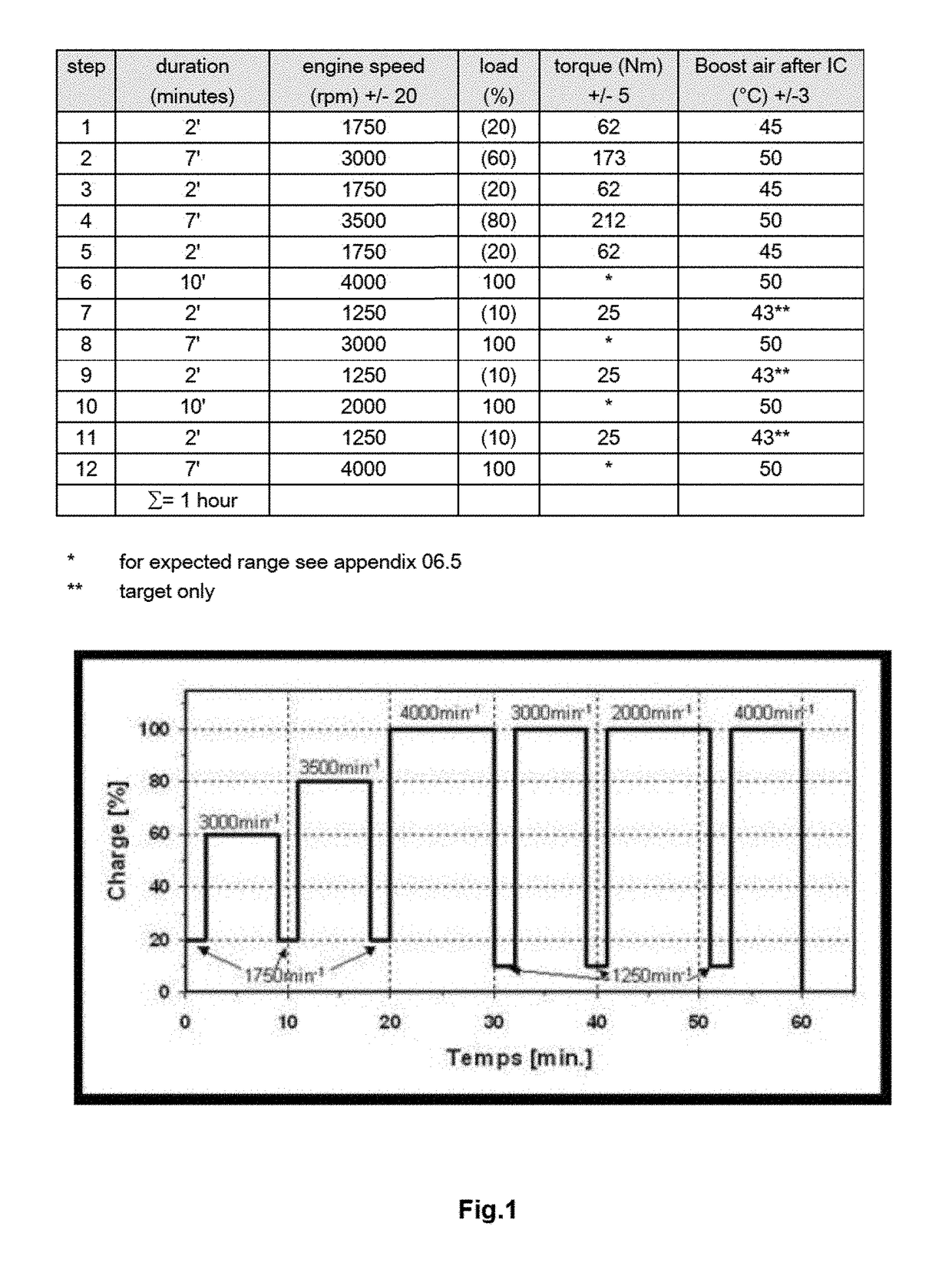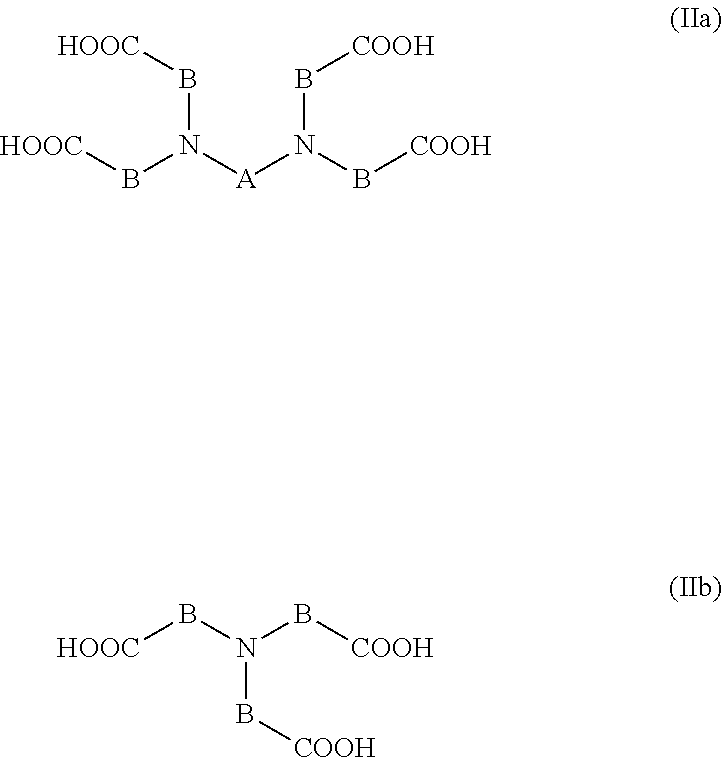Copolymers as additives for fuels and lubricants
a technology of additives and copolymers, which is applied in the direction of liquid carbonaceous fuels, lubricant compositions, fuels, etc., can solve the problems of engine performance, engine performance, and engine performance. high torque,
- Summary
- Abstract
- Description
- Claims
- Application Information
AI Technical Summary
Benefits of technology
Problems solved by technology
Method used
Image
Examples
preparation examples
B. Preparation Examples
[0315]General Procedure
[0316]A reactor having an anchor stirrer was initially charged with the olefin or the mixture of olefins with or without solvent (as a bulk polymerization). The mixture was heated to the temperature specified under a nitrogen stream and while stirring. To this were added the free-radical initiator specified (optionally diluted in the same solvent) and molten maleic anhydride (1 equivalent based on olefin monomer). The reaction mixture was stirred at the same temperature for the reaction time specified and then cooled down.
[0317]If hydrolysis is desired, water was subsequently added in the amount specified and the mixture was stirred either at 95° C. for 10-14 h or under pressure at 110° C. for 3 h.
synthesis example 1
[0318]A 2 L glass reactor having an anchor stirrer was initially charged with a mixture of C20-C24 olefins (363.2 g, average molar mass 296 g / mol) and Solvesso 150 (231.5 g, DHC Solvent Chemie GmbH, Speldorf). The mixture was heated to 160° C. in a nitrogen stream and while stirring. To this were added, within 5 h, a solution of di-tert-butyl peroxide (29.6 g, from Akzo Nobel) in Solvesso 150 (260.5 g) and molten maleic anhydride (120.3 g). The reaction mixture was stirred at 160° C. for 1 h and then cooled down. The active ingredient content was about 40%.
[0319]GPC (in THF) gave an Mn=1210 g / mol, Mw=2330 g / mol for the copolymer, which corresponds to a polydispersity of 1.9.
use examples
C. Use Examples
Use Example 1: DW10 Na Soap IDID Test (Clean-Up)
[0321]To examine the influence of the additives on the performance of direct injection diesel engines, as a further test method, the IDID engine test, in which the exhaust gas temperatures in the cylinders at the cylinder outlet were determined on cold starting of the DW10 engine was. A direct injection diesel engine with common rail system from the manufacturer Peugeot as per test method CEC F-098-08 was used. The fuel used was a commercial B7 diesel fuel according to EN 590 from Aral. To artificially induce the formation of deposits, 1 ppm by weight of sodium naphthenate and 20 ppm by weight of dodecenylsuccinic acid were added thereto in each case.
[0322]Similarly to the CEC F-98-08 method, the engine power is measured during the test. The test consisted of two parts:
[0323]I. Dirty-Up:
[0324]The test was conducted without addition of compounds according to this invention. The test was shortened to 8 hours; the CEC F-98-...
PUM
| Property | Measurement | Unit |
|---|---|---|
| Fraction | aaaaa | aaaaa |
| Fraction | aaaaa | aaaaa |
| Power | aaaaa | aaaaa |
Abstract
Description
Claims
Application Information
 Login to View More
Login to View More - R&D
- Intellectual Property
- Life Sciences
- Materials
- Tech Scout
- Unparalleled Data Quality
- Higher Quality Content
- 60% Fewer Hallucinations
Browse by: Latest US Patents, China's latest patents, Technical Efficacy Thesaurus, Application Domain, Technology Topic, Popular Technical Reports.
© 2025 PatSnap. All rights reserved.Legal|Privacy policy|Modern Slavery Act Transparency Statement|Sitemap|About US| Contact US: help@patsnap.com



